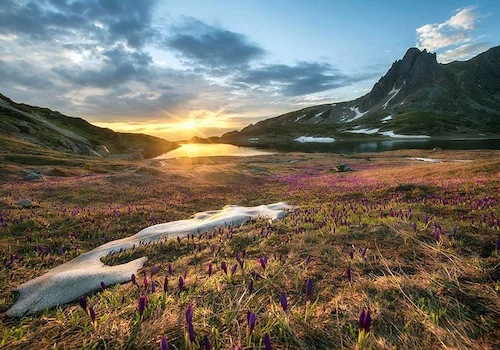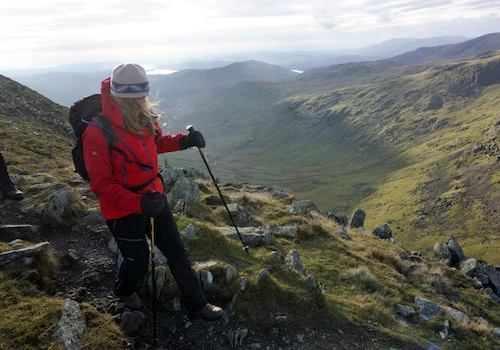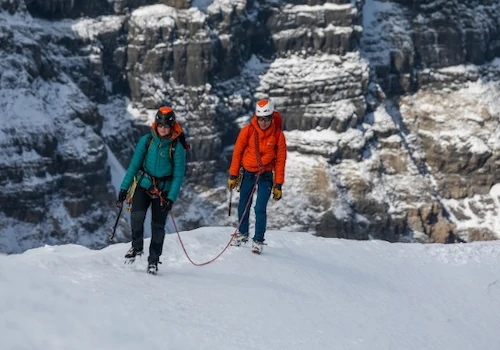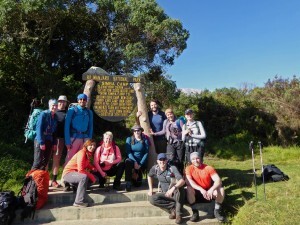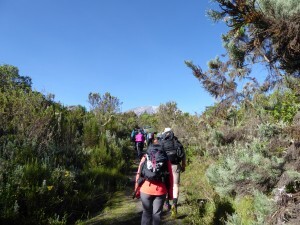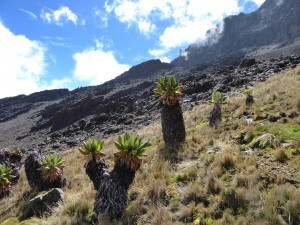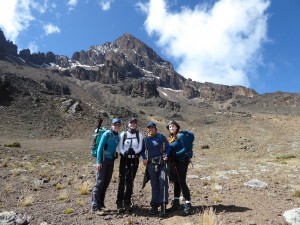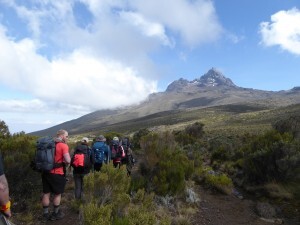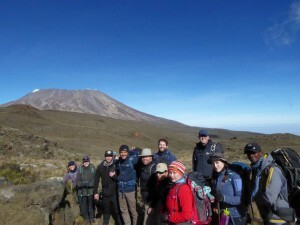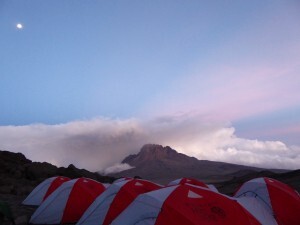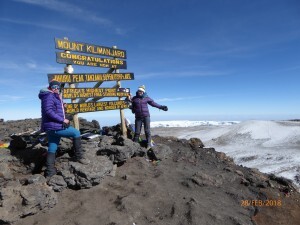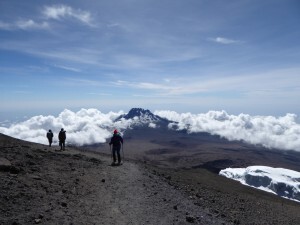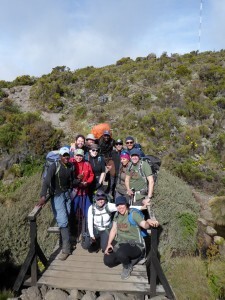
- Expeditions
By Region
By Month
By Grade
By Height
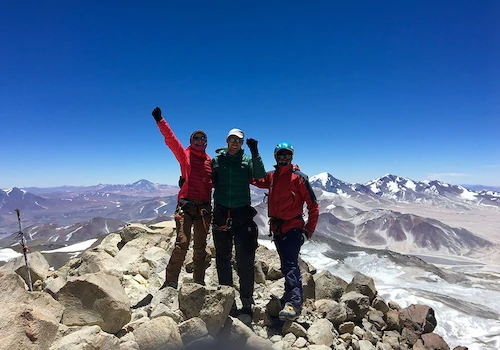
- Treks
- UK & Alpine
- Schools
- Hire
- News
- Shop
Kilimanjaro - Hakuna Matata!
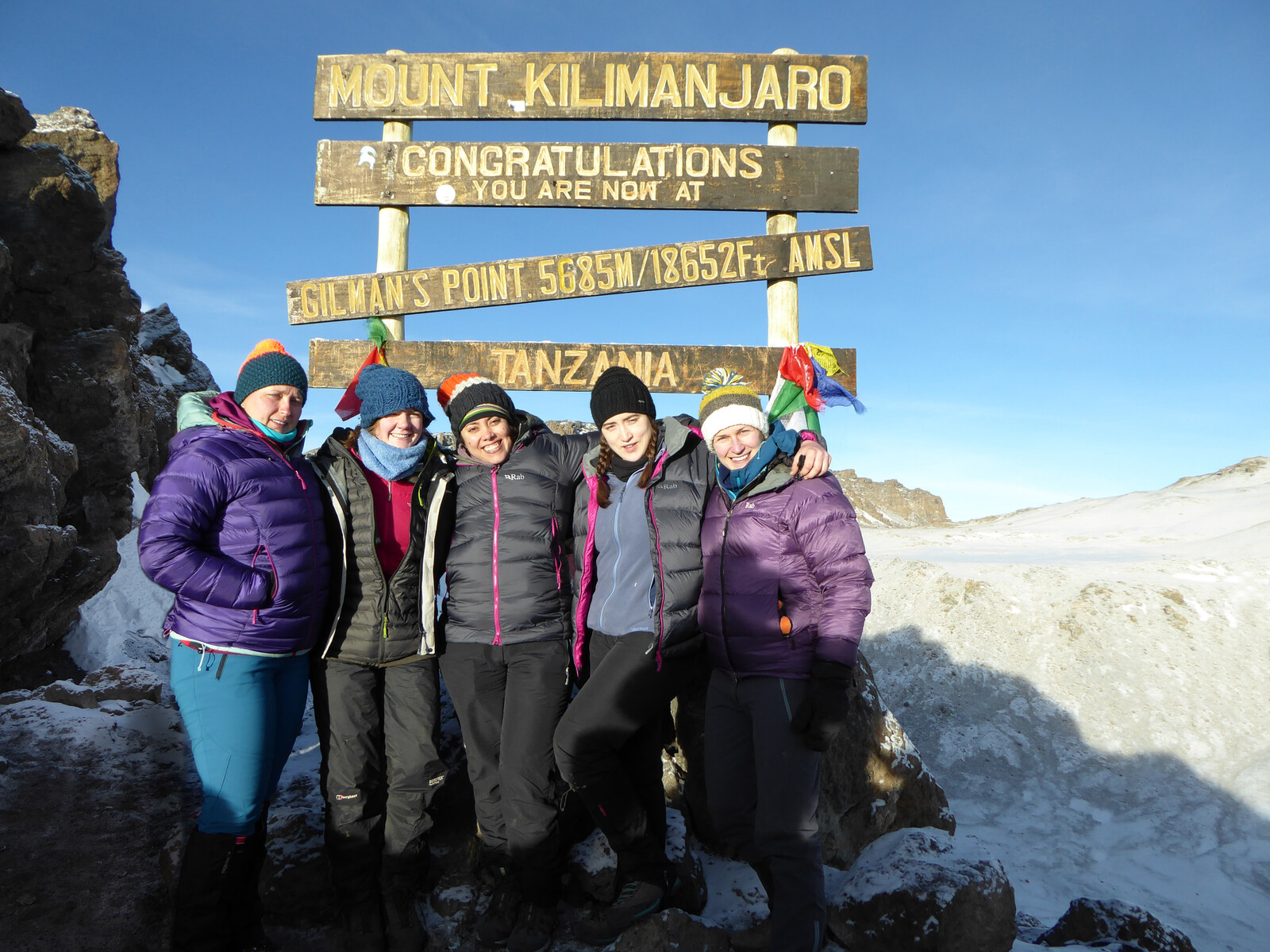
Kilimanjaro Rongai Route, 21st February 2018
Expedition Leader: Alice Chivers
Passing waving and grinning school children and bustling banana markets, we drove to the roadhead for the Rongai route. This was the start of our Kilimanjaro trek on the north east of the mountain, close to the Kenyan border. The path was initially a gentle gradient through pine forest and gave little clues that we were embarking on the climb of the highest peak on the continent. As we gained height we walked through cloud forest, with trees covered in old man’s beard and bright red hot pokers. Flashes of white tails broke through the trees as Colobus monkeys danced along the canopy. Maize and potato fields gave way to steeper ground. Moshi’s 35 degree heat this morning had lulled us into a false sense of security so when the heavens opened with great force, we were caught off guard and soaked to the skin within a minute. Thankfully the rain went as quickly as it came, and we were soon at camp with tea and our tents for the night.
What a difference a day makes. Clear skies met us as we unzipped our tents and we enjoyed dry weather for the rest of the trek above 3000m. We climbed steadily upwards, passing several caves where porters used to sleep in days gone by before the introduction of higher quality tents. Several of the group remarked how impressive our crew of porters were, as they effortlessly skipped past us having packed up our campsite, carrying crates or sacks of kit on their heads, balancing hands-free. Meanwhile we continued our ‘polé-polé’ plod up the mountain side, admiring the green-brown-orange scape of the Rongai forest merging with the Masai plains beyond. Giant Senecios lined the stream, characteristic of the moorland zone at this altitude. Surviving on very little water, these plants have a striking pineapple resemblance and use the stem as a reservoir from which the plant heads flower.
Our path took us over rocky ridge lines up into the shadow of Mawenzi’s jagged peak where we were to spend a day acclimatising to the air at 4330m. Kibo’s sister peak Mawenzi is off most climbers’ radars due to its loose rock and abyss-like ravines which drop below the summit, and contrasts starkly with Kibo’s iconic rounded mass. The Rongai route on Kilimanjaro is particularly special in that it takes you right up to the base of Mawenzi and its North Corries which we explored on our rest day. From there our footsteps took a near direct line to the Saddle and on to the side of Kibo itself, with an ever more lunar like scene unfolding the closer we got to the huge crater.
With a final few hours’ sleep at Kibo camp at 4700m, we rose before midnight to make for the summit under a waxing moon. The scree was solid underfoot and the darkness speckled with headtorches beyond, each one gradually shuffling skywards until the night succumbed to the beginnings of dawn and the crater top emerged, bringing with it a focus for our efforts. Behind us, Mawenzi’s pinnacles became sharp silhouettes and revealed the vast scale of Africa’s highest summit. The sunrise gave a welcome warmth that glowed onto the hillside. With slowing feet and a great sense of relief we reached Gilman’s Point (5685m) and our first glimpse into Kibo’s snowy crater stretching below. From here a gentle ramble around the crater rim brought us to Stella Point where trekkers on the Machame and Lemosho routes join the ridge. With only a little more ascent to go, Uhuru Peak felt within reach, but numerous false summits made for a deceptively tough final push to the top. The southern and eastern ice fields bedeck the volcano like dazzling jewels on a crown that seem incongruous with the rocky scree slopes down all sides. You realise you must be high for them to survive the searing African sun. It was a surprisingly fast descent down to camp for lunch then a steady trek down to our last camp at Horombo. There we were met with songs of celebration from our superb crew, which rang all the way home with me..Kilimanjaro hakuna matata!

